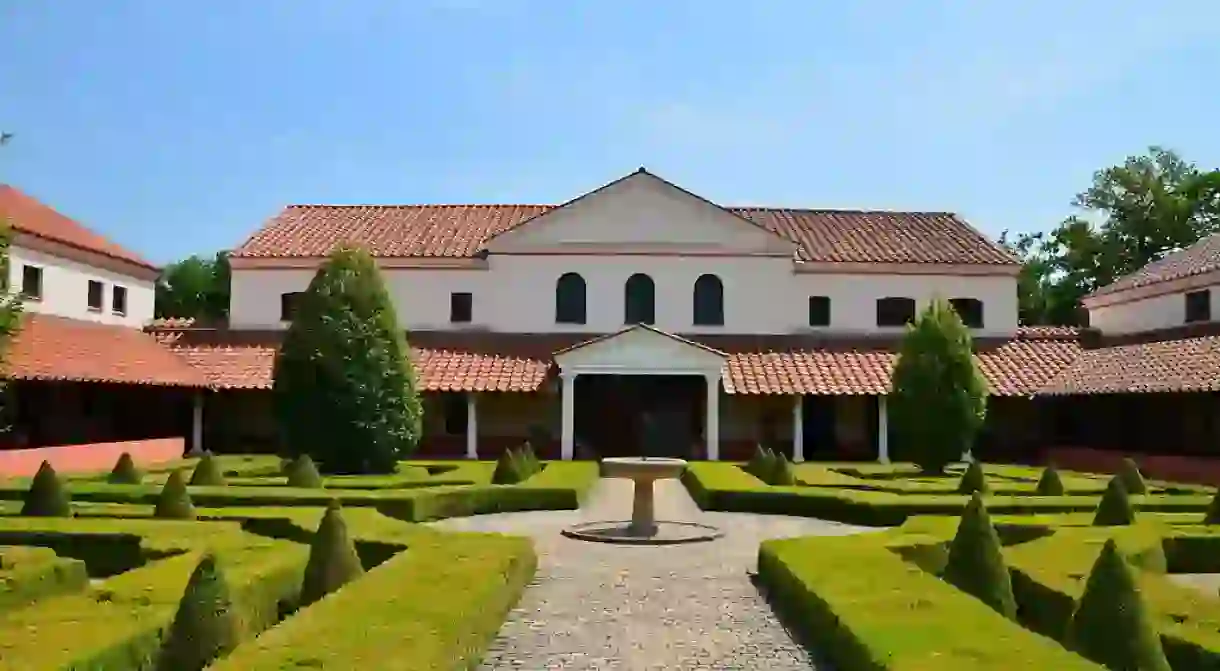10 Reasons Why You Should Visit Germany's Saarland State

Small but mighty, that’s how Germany’s Saarland state is best described. In an area 27 times smaller than Bavaria – Germany’s smallest state boasts all kinds of natural and man-made attractions, historical sights and culinary treats. We’ve summed up the top 10 reasons why you should visit the Saarland state at least once in your lifetime.
Lush scenery
Much of the Saarland state is covered in lush forests traversed by a multitude of walking paths, hiking trails and cycling routes. The Saar-Hunsrück Climb was voted Germany’s most beautiful hiking trail a few years back and still stuns outdoor enthusiasts with idyllic lakes, scenic vantage points and stunning valleys en route.

Natural wonders
Speaking of stunning nature, one of the Saarland’s most iconic spots and must-have Instagram shots is the Saarschleife river loop. A treetop walk leads up to a viewing platform at 42 metres which rises from the densely forested hillside. From the observation deck, you can see the landscape in all its glory. In the autumns and winter months, thick mist often lingers above the valley and adds an extra bit of mystical flair to the scenery.
Saarbrücken
The state capital Saarbrücken is relatively unknown to international tourist when compared to its nearby counterparts Dusseldorf, Stuttgart or even Mainz, but the charming city might surprise you when it comes to listing noteworthy sights. From grand Baroque landmarks and gobsmacking churches to art galleries, museums and fantastic restaurants, Sarbrücken has quite a bit to offer and needs to be on your list of things to do.

Culinary heaven
When compared to all other German states, tiny Saarland boasts the highest concentration of Michelin-starred restaurants. Household names such as Klaus Erfort and Christian Bau cook up a gourmet storm in Saarbrücken, but it does not always have to be a fancy multi-course meal. The region is also famous for a simple dandelion salad and for preparing large slabs of pork over an open fire at large gatherings.
Industrial heritage
At its peak in 1965, the ironworks of Völklinger Hütte employed more than 17.000 people on its site just outside of Saarbrücken. Today, the complex of rusty metal pipes, tanks and smelters is being slowly reclaimed by vegetation and used as an urban exhibition and event space and museum. Guided tours lead you through the dystopian labyrinth which was declared a UNESCO World Heritage Site in 1994.

Art and culture
The small state goes big when it comes to art exhibitions. Besides the top-notch galleries and museums in Saarbrücken and Saarlouis, the Saarland people are quite inventive when it comes to repurposing abandoned or disused urban spaces as exhibition sites. A specifically founded initiative plans regular urban events throughout the year. Every November, the Völklinger Hütte complex mentioned above sees the world’s largest urban art project move into its halls. More than 100 international artists were invited to display their works at the UrbanArt Biennale in 2017.
Roman remains
Western Germany is home to numerous archaeological excavation sites which have unearthed traces of the early Roman settlements, and the Saar river is no exception. Outside the town of Perl, a 2000-year-old Roman villa has been reconstructed from its ancient remains and is open to the public. A visit to the Borg Roman Villa catapults you back to the first century AD and allows you to step into residential buildings, bathhouses, a tavern, courtyard, workshops and other sections of the complex.

Francophile lifestyle
The Saarland region is a tad French, that is to say, that bits of French culture have weaseled in on the food scene, dialect and cultural identity, which is not much of a surprise considering the regional history and today’s shared border. French is mandatory in school, many signposts are bilingual, and the state has the largest per capita consumption of champagne in all of Germany. Like the French, Saarland locals work to live and don’t live to work.
Festivals
Throughout the year, Saarland puts some fun and boozy festivals on the agenda. The Rocco del Schlacko festivals attract around 25,000 people with their lineup of international punk and rock stars as well as German newcomers. And while those revellers enjoy the screeching guitar sounds, the rest of the country indulges in barrels of local wines at the regional wine festivals.

Schlossberg Caves
If you’re not convinced yet that the Saarland state is beautiful, wait until you see what it looks like underground. Homburg is primarily known for the extensive network of red sandstone caves which spreads 12 stories deep into the earth near the city centre. The sandstone walls appear in all hues of red, orange and yellow, and hourly guided tours take you through the colourful man-made corridors and domed halls of the former mine.













